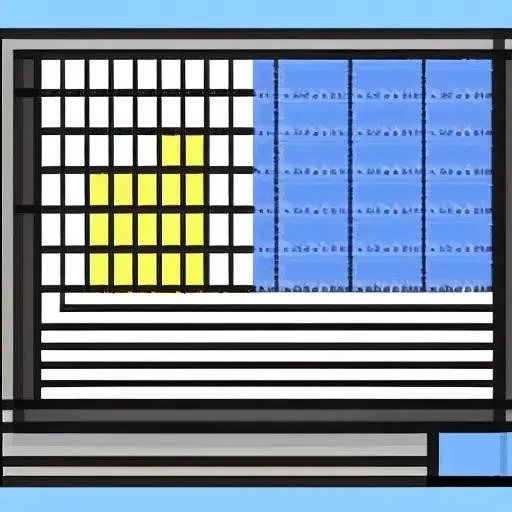In an era defined by relentless innovation and an insatiable demand for efficiency‚ the gears of industry are turning faster than ever before. From automated warehouses humming with robotic precision to smart factories orchestrating complex production lines‚ the future of manufacturing is here‚ driven by a powerful‚ yet often unsung‚ technological marvel: the Industrial FPGA. These Field-Programmable Gate Arrays are not merely components; they are the reconfigurable architects of a new industrial paradigm‚ paving the way for unprecedented levels of adaptability‚ speed‚ and intelligence across countless sectors. Their inherent flexibility and formidable processing capabilities are proving incredibly effective in addressing the intricate computational challenges that define modern industrial solutions‚ heralding a truly transformative era.
The industrial landscape is undergoing a profound digital metamorphosis‚ a shift demanding systems that are not only robust and reliable but also agile enough to evolve with rapidly changing market requirements. Traditional fixed-function hardware‚ once the bedrock of industrial control‚ often struggles to keep pace with these escalating demands. This is where Industrial FPGAs emerge as indispensable tools‚ offering a uniquely powerful solution. Unlike Application-Specific Integrated Circuits (ASICs)‚ which are designed for a single purpose‚ FPGAs can be reprogrammed post-manufacturing‚ allowing for dynamic adaptation to new algorithms‚ protocols‚ or functionalities without the need for costly hardware replacements. This remarkable characteristic grants industries an unparalleled competitive edge‚ significantly extending the operational lifespan of equipment and future-proofing critical investments. By integrating insights from AI and machine learning‚ FPGAs are transforming edge computing‚ enabling real-time decision-making that was once confined to centralized‚ cloud-based systems.
| Feature/Application | Description |
|---|---|
| Reconfigurability | Allows hardware to be reprogrammed for different tasks or evolving requirements‚ extending lifespan and adapting to future demands without physical replacement. |
| Parallel Processing | Executes multiple operations simultaneously with ultra-low latency‚ crucial for real-time control in critical industrial systems like robotics and motor control. |
| Edge AI & IoT | Enables on-device AI inference and intelligent decision-making directly at the data source‚ reducing cloud dependency‚ improving response times‚ and enhancing data privacy. |
| Predictive Maintenance | Processes high-volume sensor data in real-time to detect anomalies and anticipate equipment failures‚ minimizing costly downtime and optimizing operational efficiency. |
| High Performance Computing | Provides custom hardware acceleration for data analytics‚ complex machine vision systems‚ and intricate control algorithms‚ significantly boosting throughput. |
| Long-Term Availability | Offers extended product lifecycles‚ often measured in decades‚ which is absolutely critical for industrial infrastructure requiring consistent support and reliability. |
| Energy Efficiency | Can be optimized for specific workloads‚ leading to more efficient power consumption compared to general-purpose processors for particular tasks. |
| Reference Link |
The true power of FPGAs in industrial contexts lies in their unparalleled ability to execute parallel processing. Unlike traditional CPUs‚ which process instructions sequentially‚ FPGAs can perform thousands of operations concurrently. This inherent parallelism is a game-changer for applications demanding incredibly low latency and deterministic performance‚ such as real-time motor control‚ high-speed data acquisition‚ and mission-critical safety systems. Imagine a robotic arm performing intricate assembly tasks; every movement‚ every grasp‚ must be precisely calibrated and executed in milliseconds. FPGAs‚ by processing sensor data and control signals simultaneously‚ ensure this seamless‚ instantaneous choreography‚ significantly enhancing both precision and safety on the factory floor.
“The shift towards Industrial FPGAs isn’t just an incremental improvement; it’s a foundational change that unlocks capabilities previously deemed impossible‚” asserts Dr. Anya Sharma‚ a leading expert in embedded systems at the Industrial Automation Institute. “We’re seeing them deployed in areas ranging from sophisticated machine vision systems that inspect products with superhuman accuracy to advanced network infrastructure facilitating secure‚ high-bandwidth communication across sprawling industrial sites. The adaptability they offer is simply unmatched‚ allowing companies to respond to market shifts with agility that was once unimaginable.” This expert perspective underscores the pervasive impact these devices are having‚ profoundly reshaping the very fabric of industrial operations.
Industry examples abound‚ showcasing the profound impact of this technology. In the automotive sector‚ FPGAs are powering sophisticated advanced driver-assistance systems (ADAS) for autonomous vehicles being developed for internal factory transport‚ processing vast streams of sensor data—from LiDAR‚ radar‚ and cameras—in real-time to enable instantaneous decision-making. In energy management‚ they are optimizing smart grids‚ efficiently balancing supply and demand by rapidly analyzing data from distributed sensors. Furthermore‚ the advent of Industry 4.0 and the Internet of Things (IoT) has propelled FPGAs to the forefront of edge computing. By embedding AI inference capabilities directly into devices on the factory floor‚ FPGAs empower machinery to make intelligent decisions locally‚ reducing reliance on cloud connectivity‚ minimizing latency‚ and bolstering data security‚ thereby creating a truly decentralized and responsive operational ecosystem.
Looking ahead‚ the trajectory for Industrial FPGAs is undeniably upward‚ promising even greater integration and innovation. As the world moves towards increasingly complex and data-intensive industrial processes‚ the demand for customizable‚ high-performance computing at the edge will only intensify. Future applications will undoubtedly include even more sophisticated predictive maintenance algorithms‚ hyper-personalized manufacturing lines‚ and advanced human-robot collaboration systems‚ all underpinned by the relentless processing power and reconfigurability of FPGAs. These incredible devices are not merely keeping pace with industrial evolution; they are actively driving it‚ shaping a future where factories are not just productive but also remarkably intelligent‚ adaptive‚ and resilient. The quiet revolution of the Industrial FPGA is well underway‚ promising a brighter‚ more efficient tomorrow for industries worldwide.






